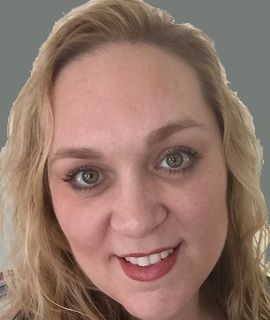Article
Phone Calls May Help Assess, Improve Oral Cancer Therapy Adherence
Author(s):
With the growing use of oral therapies in cancer care, it is crucial that oncology nurses are using a systematic approach to assess and improve adherence, according to Whitney Perry, APRN, AOCNP.
Whitney Perry, APRN, AOCNP

Whitney Perry, APRN, AOCNP
With the growing use of oral therapies in cancer care, it is crucial that oncology nurses are using a systematic approach to assess and improve adherence, according to Whitney Perry, APRN, AOCNP.
In 2013, Perry, a nurse practitioner at Baptist Health Louisville - CBC Group, and her colleagues started a project aimed at just that—enhancing adherence and ultimately, continuity of care for patients prescribed oral anticancer therapies. She presented on the key takeaways from her study at the 2016 Oncology Nursing Society (ONS) Congress.
“Could we monitor adherence?” Perry asked, explaining the project’s fundamental question. “Could we also try to intervene early to prevent some of these toxicities—therefore possibly preventing adherence issues and also keeping the patients on oral medications longer?”
To answer these questions, the team set out to measure the degree to which patients adhere to oral therapy as well as the proportion of patients who require intervention.
As part of the study, patients and families were given a single sheet of paper—Perry said she felt a single page would lend itself to a short, comprehensive guide—with instructions about their oral medications.
Nurses then called patients two weeks after beginning their oral regimens and then either 2 weeks after the first call or 2 weeks after a follow-up office visit.
During this phone call, nurses sought to verify that patients were taking medication at the proper time and at the appropriate dose, confirm that no doses were missed, and confirm that the medication was being taken with or without food as prescribed. Further, nurses were instructed to counsel patients about adherence if needed, screen for side effects, and, once again, review the dosing schedule.
To gauge adherence during phone calls, Perry and her colleagues used the eight-item Morisky Medication Adherence Scale (MMAS).
Data showed “high level adherence” (defined as 8/8 on MMAS) among 82% of patients (n = 162) on the first follow-up call and 86% (n = 123) on the next call.
Further, intervention—which was independent of MMAS—was needed in 17% of patients to address concerns or toxicities. In determining whether or not intervention was needed, study authors wrote, there was a discussion of tolerance, concerns, and toxicities.
Though “key players” in this study include physicians, pharmacy benefit advocates, and social workers, Perry said nurses are in an ideal position to make the biggest difference.
“We found that the nurse practitioners pushing this was best for us to help with these interventions,” Perry said, though she realizes that at some institutions there may not be enough nurse practitioners to go around.
There was no correlation between self-reported adherence and need for intervention, the authors wrote.
Perry said she and her colleagues still think some issues need to be addressed, including concerns regarding education, which takes place soon after a patient is prescribed an oral anticancer therapy. If a patient has not been educated yet, “this serves as our double-check to make sure that they have session set up with one of the nurse practitioners,” she said.
“Every now and then, the physician will decide that they are going to educate,” which can disrupt the process, she said.
Overall, the authors wrote, “follow-up phone calls and clinician assessment may be an effective approach to identify which patients need support with adhering to therapy.”
The entire project boils down to better drug efficacy, Perry said.
“The outcomes we hope to address with this are, obviously, better adherence, but also better tolerance of the drug and therefore it being more effective for patients,” she concluded.
For more information, visit Nursing.OncLive.com.
<<<







